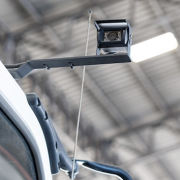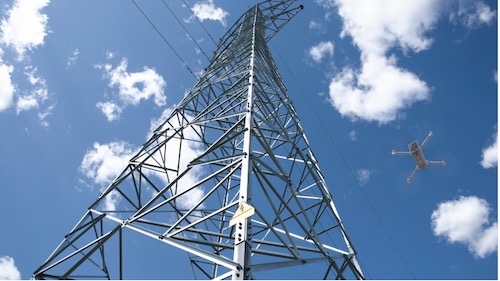We live in a digital world, one that relies on electrical energy to keep things humming along in nearly every facet of our lives. Energy companies strive to maintain aging infrastructure and ensure their power lines are functioning properly and efficiently—no small task, given the size and scope of their service areas.
Line inspections are a necessary component of maintaining service: they are labor-intensive, potentially dangerous, and expensive. Lucky inspectors might examine power lines from cherry pickers; others have to climb towers hundreds of feet tall or hang from helicopters to do the job. Bad weather can further increase the risk, making power linemen one of the most dangerous jobs in the US.
Save Your Energy
To protect workers and improve the rate of inspection, energy companies are dispatching drones and using AI to analyze the images. Drones are small and nimble and can fit where people cannot. They can be preprogrammed to travel along specific power lines, or they can use integrated 3D mapping capabilities to determine the most efficient routes, avoiding trees and other obstacles along the path. Equipped with cameras and other sensors, the drones collect images and detect heat signals along the route.
The images and related data are sent to a central location, where the analysis begins. Energy techs and line workers can review the data, but assessments can be subjective, and the sheer number of images can derail the success of that process. Instead, AI-based analytics software brings consistency and efficiency to problem detection. Software can assess hundreds of images in a fraction of the time needed for human eyeballs to do the same. It can identify potential problems based on common set of factors determined by the company when training the AI model, which can be updated as needed.

Analytics Work Overtime
Hitachi Vantara offers image-based inspection software that uses AI, machine learning, and analytics, so line techs can conduct inspections safely from the ground. Designed for transmission and distribution assets, Hitachi’s inspection software can automatically identify assets, detect defects—including cracked insulators or bent dampers—and assess the severity of the problem, so the most serious issues are addressed first.
Built on the Lumada software-as-a-service (SaaS) platform, Hitachi’s inspection software operates at the client site, on the cloud, or a hybrid for maximum flexibility. Dashboards display asset risk scores and potential points of failure. Advanced analytics run through potential mitigation solutions to resolve problems. Integrated mapping capabilities allow line techs to quickly find and fix compromised equipment before issues escalate.
An image-based detection solution not only improves worker safety and reduces the impact of faults on the power supply, it saves time and money. The use of drones can cut inspection costs by 55 percent, and automated analytics can shave off 80 percent of the time needed to assess images.
Next Steps
Learn more at Hitachi Vantara Hitachi Vantara and watch the video on image-based inspections.
Find out more about the Hitachi Lumada platform.
Image Credits: Hitachi Vantara

